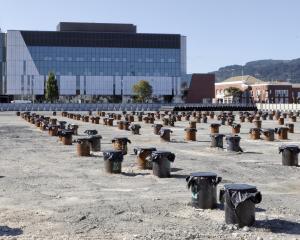As the dust settles on the announcement last weekend about planned changes to earthquake regulations, it must now be hoped they prove effective in providing promised partial relief.
Dunedin, Oamaru, and Auckland will be among the centres to benefit most from extended timeframes. Each has many older buildings requiring work.
Instead of buildings in the ''low-risk'' zone having to be assessed within five years with strengthening to 34% of the new building code within 15 years, the time limits will be 15 years and 35 years. For medium-risk areas, which include Invercargill, Timaru, Nelson and Wanganui, the scale is 10 years and 25 years.
High-risk includes Christchurch, Wellington, Napier and Gisborne, and they do not change.
Importantly, the types of buildings requiring assessment have been adjusted to exclude those with lower risk, such as farm buildings, monuments and storage tanks. At the same time, the focus will go on schools, universities and hospitals in high and medium areas to have them up to safer levels faster.
Whatever timeframes and whatever standards are mandated, there will always be risks.
A major earthquake could happen tomorrow and badly affect anywhere. But all risk can never be eliminated, or even minimised close to zero. What is required is a practical balance, taking into account the best estimate of the probability of a devastating earthquake and the potential consequences.
This is what Building and Housing Minister Nick Smith has done, noting a major earthquake can be expected on average every 120 years in Wellington, 720 years in Christchurch, 1700 years in Dunedin and 7400 years in Auckland. On that basis, it is worth giving the ''low-risk'' zones more time.
Dunedin and Oamaru had only begun to face the problems with earthquake assessments and their aftermath. There are real dangers of buildings being abandoned or pulled down. Already, for example, the distinctive Presbyterian Church at Andersons Bay appears doomed. Admittedly, it had a particularly low assessment.
A major fear remains that earthquake issues and assessments can be a cover for decisions based in large part on other reasons. It was claimed initially the gorgeous Oamaru courthouse would cost $5 million to bring up to standard. The figure from an Oamaru-commissioned ''independent'' was a 10th of that.
When the courts minister last year announced the building would be sold the official estimate had come some way towards the local figure, although still $1 million to $2 million.
Similarly, one wonders how convenient it has been to play up the earthquake risk and remedial costs at Dunedin's courthouse. The difficulty is assessments, especially preliminary ratings, are so subjective.
The debacle of the Bannockburn hall, when one report gave it a terrible rating and later it was judged to be 80% of the national new building code, illustrate this well. The classic case, though, has to be of an 18-year-old commercial building in Greymouth that received assessments of 0-5%, 28%, 32%, 56% and 67% from different engineers. The problems for structural engineers - and there are not enough of them - and their clients are obvious. Hopefully, as time goes on, knowledge and consistency grow.
Various organisations with their own standards and timeframes should take their lead from the Government. They need not rush and need not set standards too high. What they can do, however, is take advantage of building refits to deal with earthquake issues at the same time. And while 35% might not be enough to save buildings if the big one strikes, it should be enough to stop total collapses and save lives.
Christchurch's earthquakes were extraordinary and unexpected. While they have prompted prudence and action, they should not spur an overreaction. Even in Christchurch most of the deaths were in two relatively new buildings and most unreinforced masonry buildings, while seriously damaged, did not fall down.
Here, further south, we need a sensible balance between safety, cost, heritage values and risks.
Mr Smith's Bill, due to go through Parliament later this year, seeks to achieve that balance.












